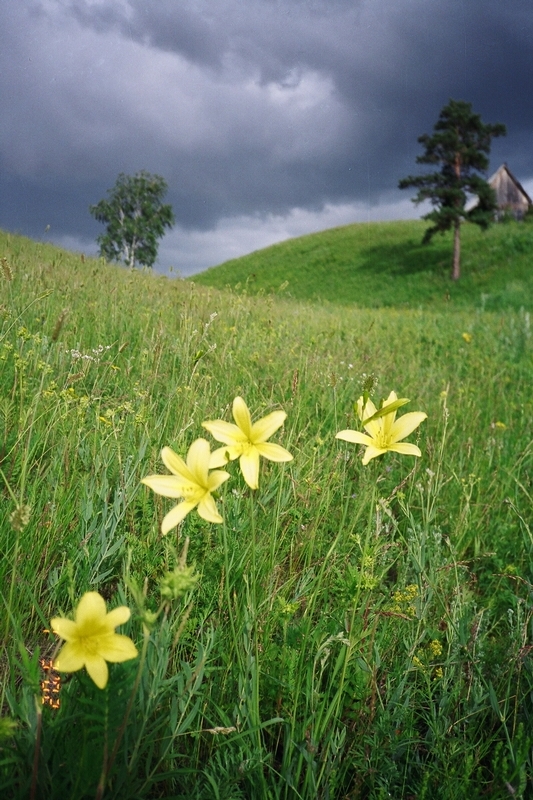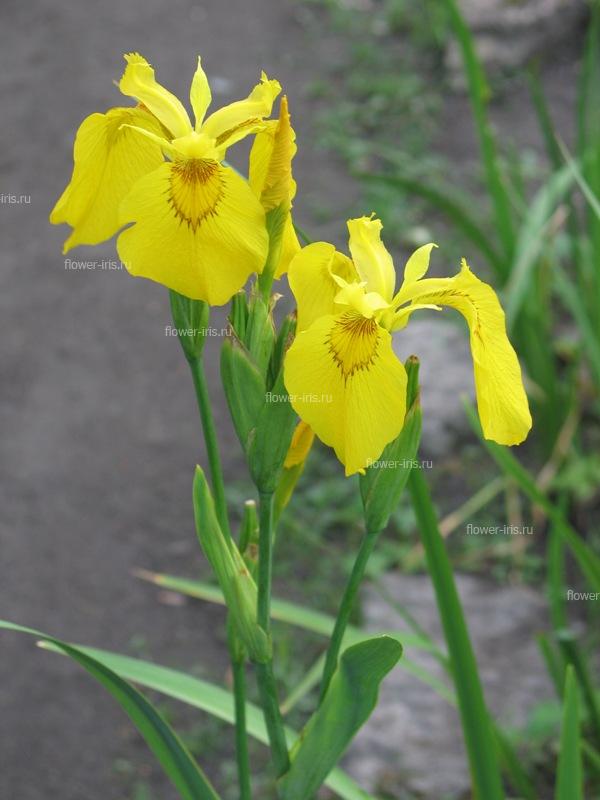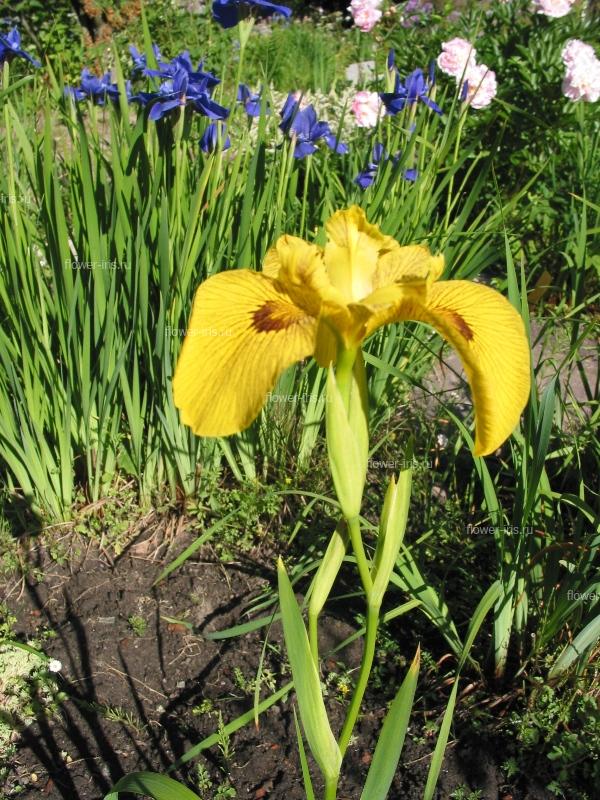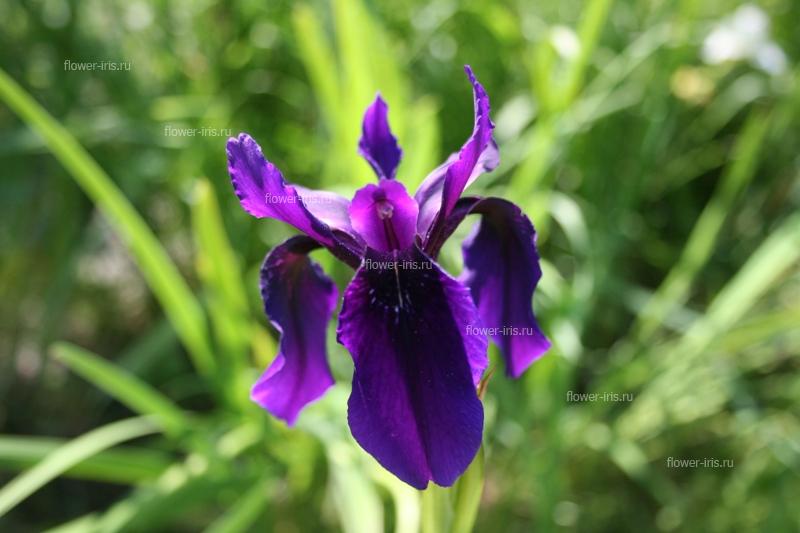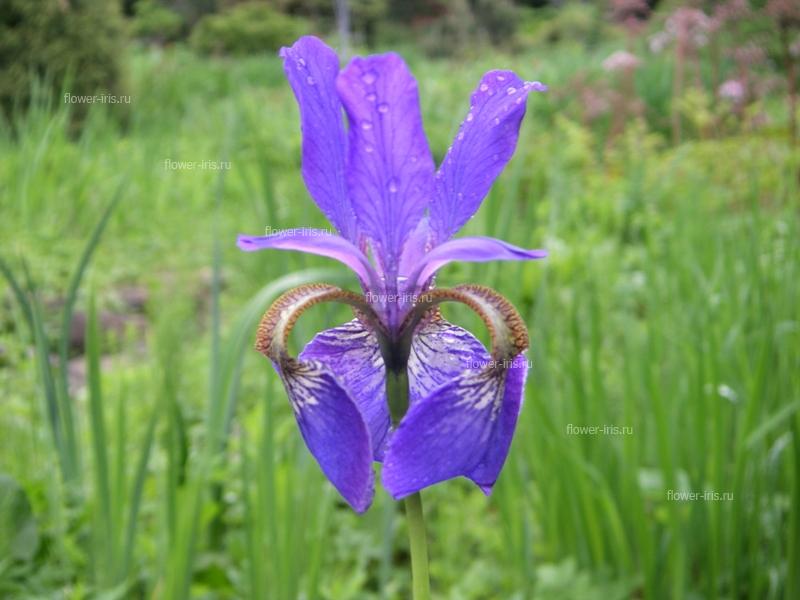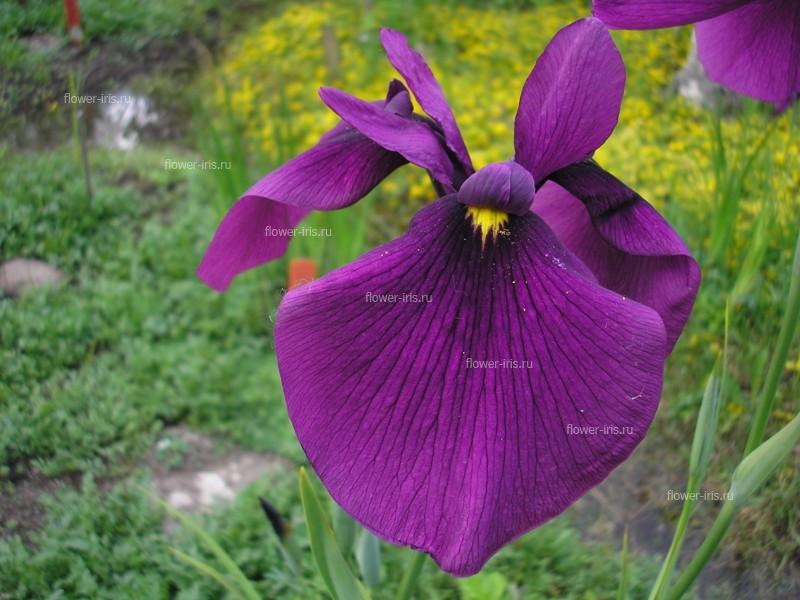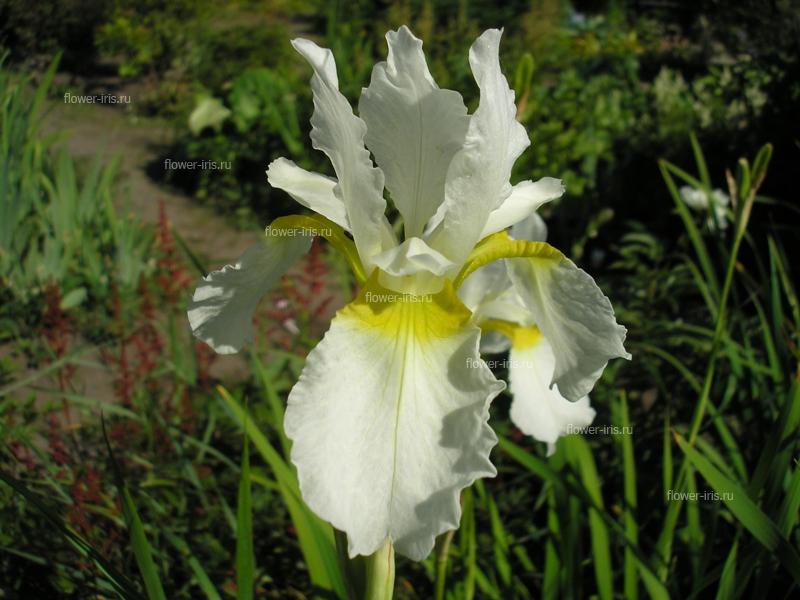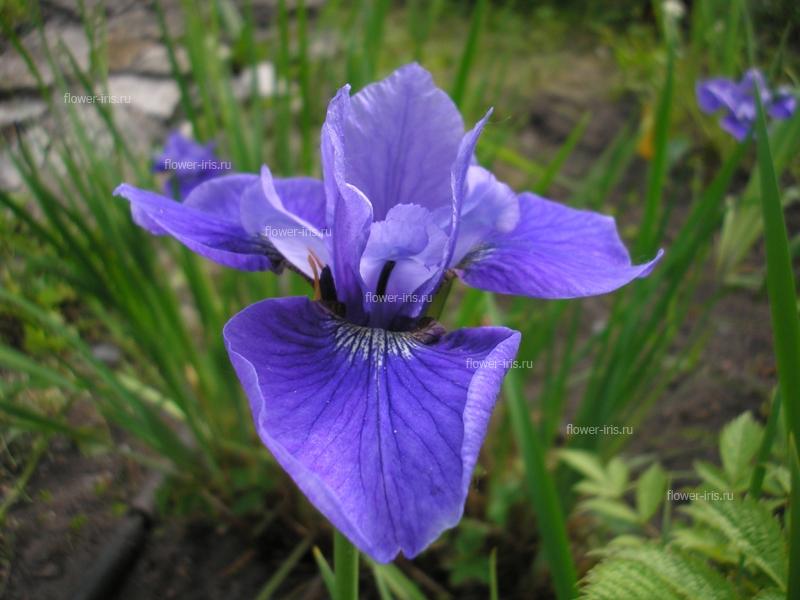|
News Camellian readings in St.Petersburg Photo Gallery |
Irises for Water Garden in the Iridarium of the Botanical garden (new photos)Homepage → News → Irises for Water Garden in the Iridarium of the Botanical garden (new photos)
29 October 2008
The translation is done through the service translate.google.com.
Expanse of water in the garden creates a specific philosophical mood. And Iris have contributed to increasing the effect. Japanese, making annual ritual contemplation of colors that gives joy and pleasure to the soul, knowingly planted irises near the water. Culture of irises they are doing more than 500 years. Flowing water - flowing between planting irises, frozen expanse of water - frozen, luxurious and tall, unusual flowers like exotic butterflies resting on the high slender sword-shaped leaves. The word iris (Iris), translated from the Greek means rainbow, and really rich and diverse range of flower color, reminiscent of one of the most colorful events of nature. In Russian, these plants are called Iris, however, also be used in the iris. Alone or in a group landing on the lawn or on the beach near the water, they always look elegant. For landing in the water will only fit one type - smooth iris (Iris laevigata). His slender ensiform pale green leaves do not have a raised vein in the middle, so he called smooth. Peduncles up to 90 cm long. Flowers large, intensely blue-or red-purple, up to 10 cm in diameter. On the outer parts of perianth bright yellow "eye". This kind of nature forms thickets on moist meadows, sometimes in the water along the banks of lakes and rivers, grassy marshes. Is the perfect decoration for any pond vysokodekorativen in group plantings. There are varieties of domestic and foreign selection. The most decorative forms iris Son Altai (Sin Altaia), Violet Parasol, Dark Aurea, Monstrosa, Yaguruma. All other moisture-loving iris - coastal plants that can tolerate temporary inundation of water. Thus, the well-known iris lozhnoairny or marsh (I. pseudacorus) very decorative natural look, can withstand prolonged flooding water, and grow on a dried soil. However, in the absence of moisture decreases decorative curtain, in the worst case, the plants do not bloom. High broad leaves and large, golden-yellow flowers that produce showy clumps, blooming for a long time. Stems up to 120 cm in length. There are plants with white flowers. Very decorative variegated form of swamp iris. Recently, a series of interesting varieties that flourish in St. Petersburg. This - Akademik Vavilov (Academic Vavilov), Donau, Gerald Derby, Golden Qween, Roy Davidson, Umkirch. Special attention to land on the waterfront and deserve xiphoid plant iris (I. ensata). It is believed that they prefer to grow submerged in water. However, it is known that the nature of xiphoid iris grows in elevated areas of floodplain meadows, woodlands with well-drained soil and herbage-grass meadows. Landslide is a favorite place beams on the southern slopes of woodlands. Here on fresh, did not manage overgrown sedge, well-drained alluvial soils, abundant flow-through wetland waters reach their optimal development. The flowers are large (spread-eagled across a flower up to 20-23 cm), dark purple-blue with bright yellow longitudinal stripe on the outer perianth lobes. Peduncles more than 80 cm in length. The Japanese have long been engaged in breeding of perennial, there are many varieties of iris xiphoid with bizarre Japanese names. This group of irises very decorative, but presents some difficulties for cultivation in north-west Russia. Their flowers are giant decorative lose in high winds and rain. Our humid climate with cold winters and low temperature differences, not suitable for delicious varieties of Japanese and American selection. Xiphoid varieties of iris can grow only aficionados of this group, strictly observing all the requirements for their content. Xiphoid and iris varieties demanding soil - it should have an acid reaction. Humidity imposed only during the growing season, it is advisable to water with rainwater (chlorinated tap water can cause yellowing of leaves), in the winter they have to go dry, it is very difficult to achieve in St. Petersburg, however, they can be grown in containers, which are exhibited at the time of flowering in the pond, and in the winter in a cool, clean storage. Without shelter in our domestic varieties of winter conditions: Altai (Altai), Dersu Uzala (Dersu Usala), Vasily Alferov (Vasilii Alferov), The First Waltz (Pervi Vals), Pink Cloud (Rosovoe Oblako), Dark Night (Temnaia Noch '), Trehlepestka (Trehlepestka). No difficulties is growing on the waterfront schetinonosnogo iris (I. setosa), so called because of the form of immature, in the form of bristles, inner perianth share. In nature, it grows mostly on dry and wet meadows, in birch, on the banks of ponds and peat bogs in open areas and in the undergrowth. Iris schetinonosny on all other species of the family Iridaceae (Iridaceae) comes to the north (beyond the Arctic Circle), differing high frost resistance. Color from light blue to dark blue color, with a diameter of up to 10 cm on the branchy stem, about 80 cm in height. The leaves are wide, light green. Certainly very popular for growing plants on the waterfront and Siberian iris (I. sibirica). In nature, it grows in floodplains, wetlands and forest meadows, forest edges. The flowers are pale or dark-violet-blue, stems up to 100 cm in length, mostly well above the leaves, is usually 3-5 flowers. In the north-west flourish and plants from nature and a large variety. Unlike iris xiphoid they are modest in their demands, are very durable and responsive to care. Forming strong bushes, irises for a long time please abundant flowering. Excellent variety of domestic and foreign selection: Violet (Fialka), Hanka, Eduard Regel, Bellissima, Blue Cape, Butter and Sugar, Cambridge, Cool Spring, Lady of Qualety, Sally Kerlin, Silver Edge, Snow Crest, Tycoon. You can use some more water-loving species closely related Siberian iris. This, Bulleya iris (I. bulleyana), the flowers are small, light blue, with a grid of darker veins, alternating with short blond oblong spots and smears, stems up to 40 cm length, iris hrizografes or gold-painted (I. chrisographes), flowers velvet, dark purple, the outer perianth lobes golden-yellow stripes, stems up to 50 cm long and blood-red iris (I. sanguinea), flowers blue or blue-purple, stems up to 80 cm in length. Agricultural technology. Irises should be planted, deepening the rhizome in the soil at 5-6 cm soil should be with humus and peat, moderately acidic or neutral for all listed species and varieties, except iris xiphoid, for it will require highly acidic soil. When planting them to abundantly watered, and depending on the weather, do it in a few days. Before flowering make nutritious feed. Iris respond positively to fertilization with organic and mineral fertilizers. Avoid alkaline fertilizer, lime is dangerous for them, especially for iris xiphoid. After flowering, reduce watering. Transplant in spring or after flowering in August. In late autumn the foliage is cut (Fig. 1). The most valuable varieties and plants leaving in the winter with green leaf harbor: fir paws dry peat or leaf. The best time hiding when the ground after catching cold (the first half of November.) Disclosure curtains on melting of snow, usually in the second half of April. Magazine in the "World of Plants", № 7, pp. 18-23. Previous news |


 Eng
Eng

